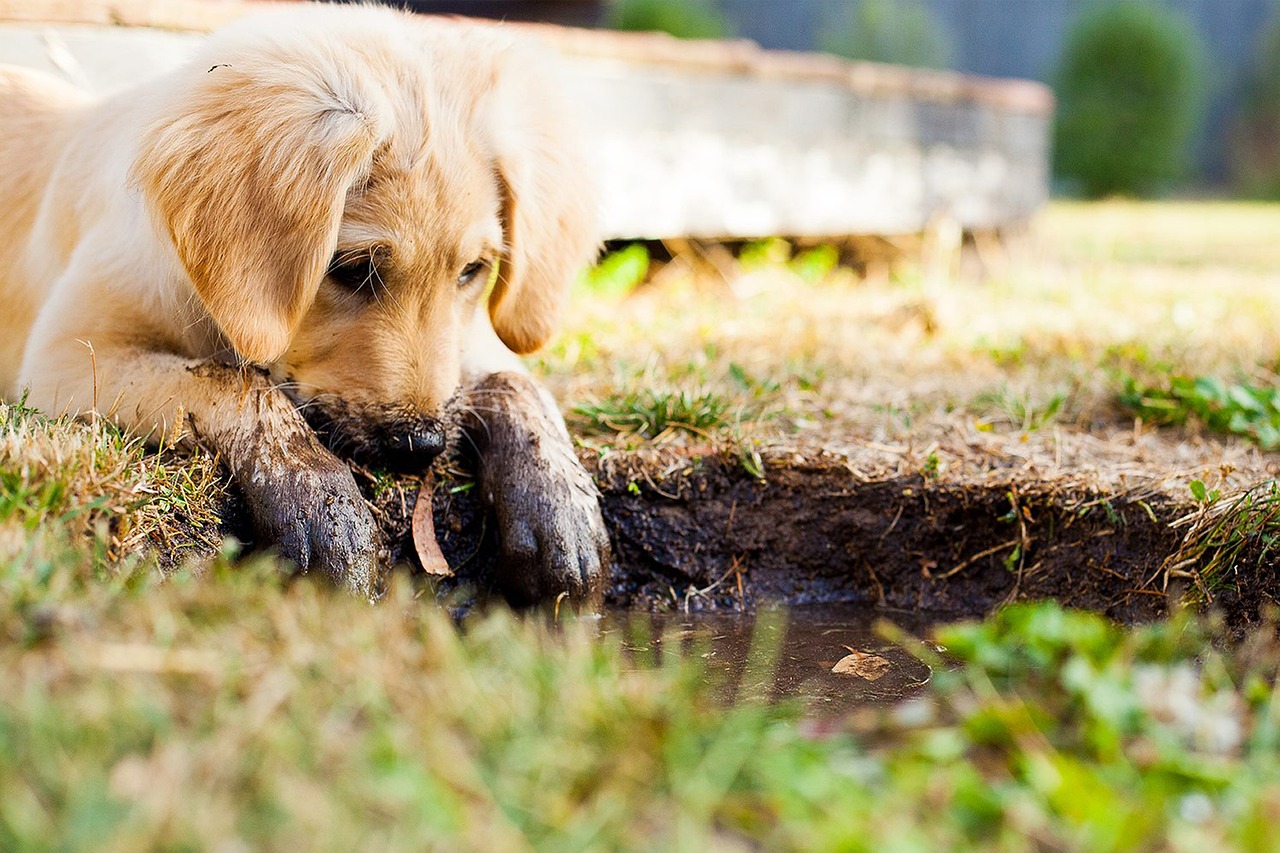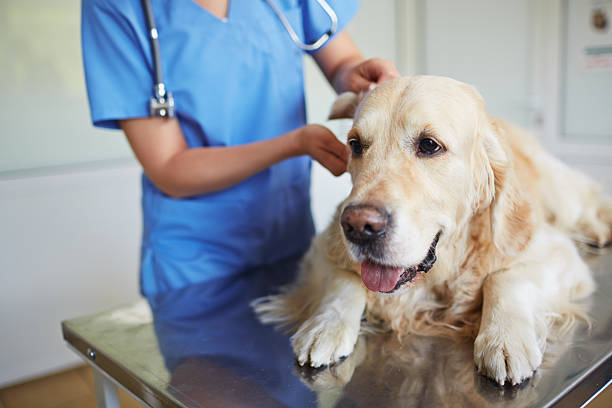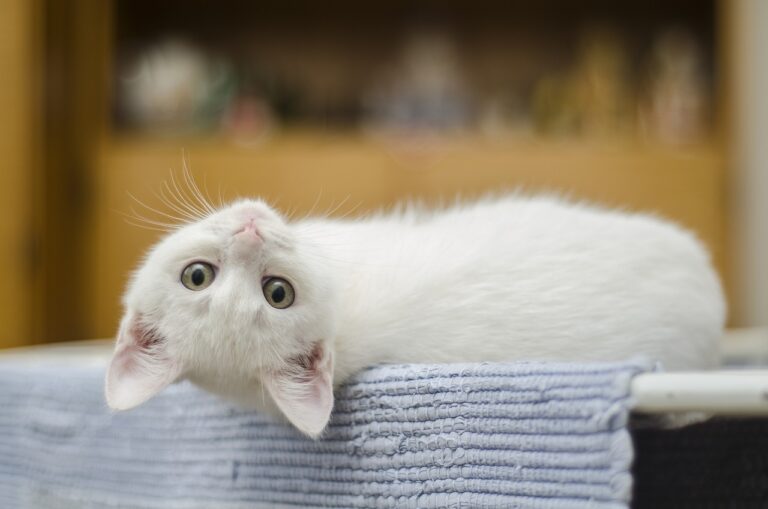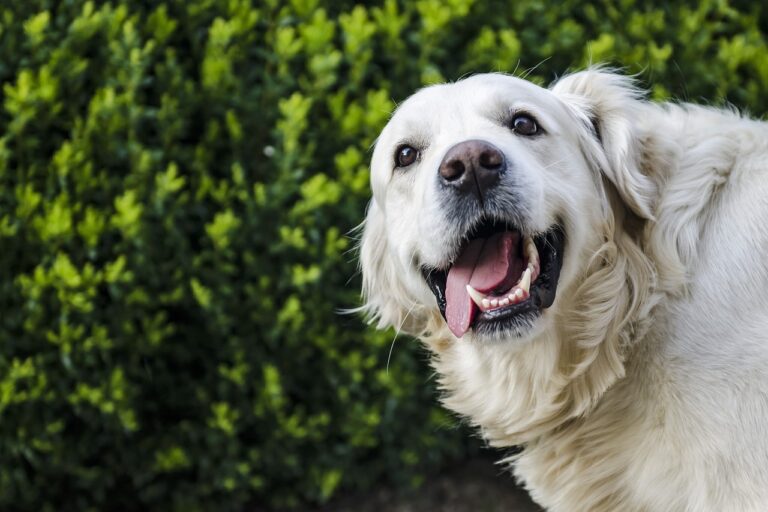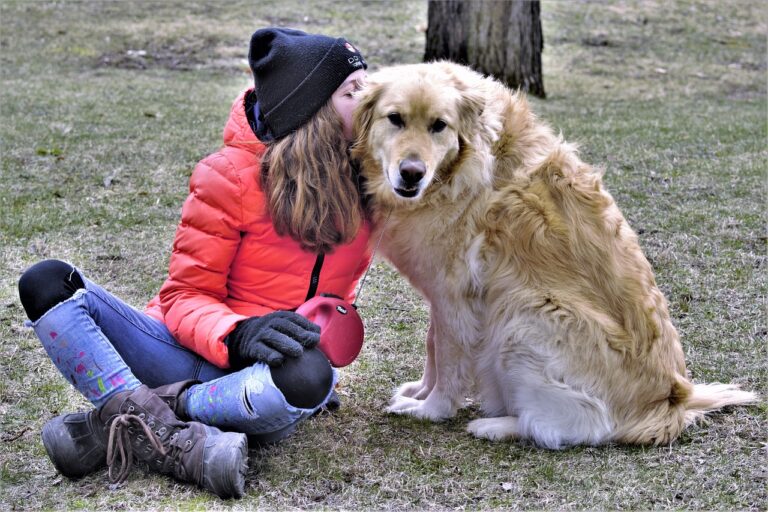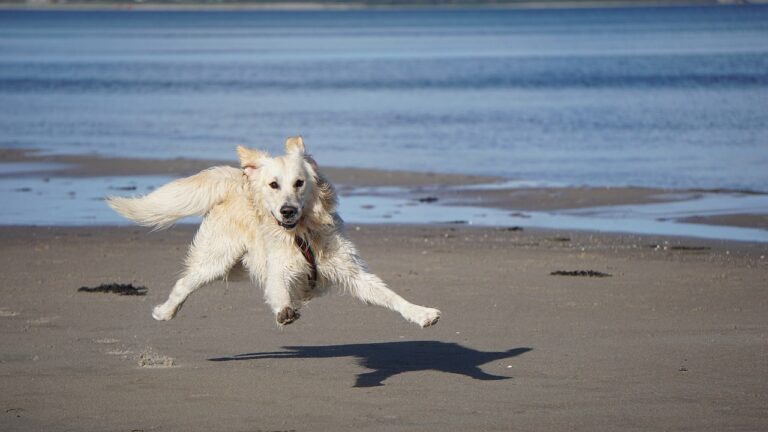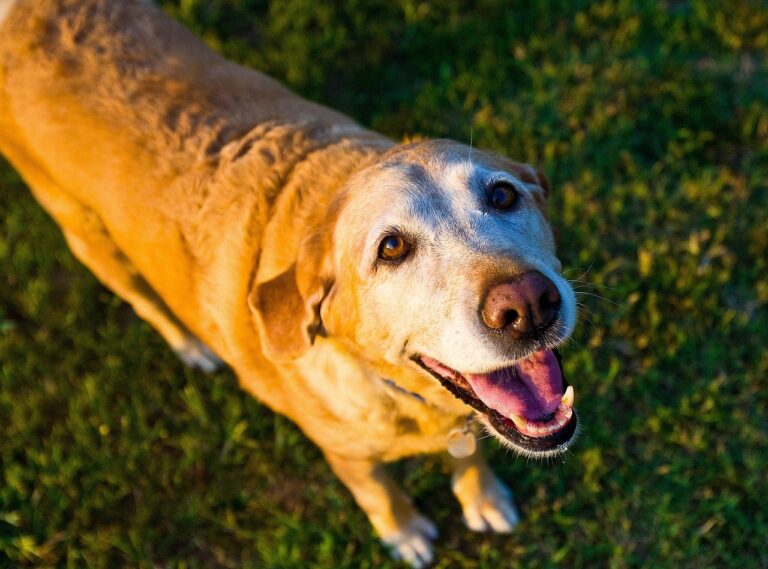Mastering Puppy Parenthood: Essential Care Tips for Golden Retrievers
Introducing Golden Retrievers
If you’re considering adding a new furry member to your family, the Golden Retriever breed is definitely worth considering. Known for their friendly nature, intelligence, and versatility, Golden Retrievers make excellent companions for individuals and families alike. Let’s explore why choosing a Golden Retriever might be the perfect choice for you and provide an overview of the breed.
Why Choose a Golden Retriever?
Golden Retrievers are renowned for their friendly and gentle temperament. They have a natural affinity for people and are known to be excellent family pets. Whether you have children, other pets, or live alone, a Golden Retriever can fit seamlessly into your life. Their patient and tolerant nature makes them well-suited for households with children, and their sociable personality allows them to form strong bonds with other pets.
In addition to their friendly nature, Golden Retrievers are highly intelligent and eager to please. This makes them easily trainable and adaptable to various lifestyles. From basic obedience to more advanced training, Golden Retrievers excel in different activities such as agility, therapy work, and search and rescue. Their versatility makes them an ideal choice for those who are looking to participate in various dog sports or engage in activities that promote mental stimulation and physical exercise.
Golden Retriever Breed Overview
Originating in Scotland, Golden Retrievers were initially bred as hunting dogs. They were specifically developed to retrieve game from both land and water. Their dense, water-repellent coat, webbed feet, and strong swimming ability make them natural water retrievers. Today, while some Golden Retrievers still participate in hunting activities, the breed is primarily known for their role as beloved family pets and loyal companions.
Here are some key characteristics of the Golden Retriever breed:
| Characteristic | Description |
|---|---|
| Size | Golden Retrievers are classified as a medium to large-sized breed. Adult males typically weigh between 65-75 pounds (29-34 kg), while adult females weigh between 55-65 pounds (25-29 kg). |
| Coat | They have a dense, water-resistant double coat that is usually wavy or straight. The outer coat is sleek and can range in shades from light to dark golden. Regular grooming is essential to maintain their coat’s health and appearance. Check out our article on Golden Retriever grooming essentials for more information. |
| Temperament | Golden Retrievers are known for their friendly, reliable, and trustworthy temperament. They are often described as gentle, patient, and eager to please. They get along well with people of all ages, including children, and are generally friendly with other animals. |
| Exercise Needs | As an active breed, Golden Retrievers require regular exercise to keep them physically and mentally stimulated. They enjoy activities such as walks, runs, games of fetch, and swimming. Providing them with ample exercise opportunities is important for their overall well-being. For more details on their exercise requirements, refer to our article on exercise requirements for Golden Retrievers. |
Now that you have a better understanding of why Golden Retrievers are a popular choice and the key characteristics of the breed, you can make an informed decision about whether a Golden Retriever is the right fit for your lifestyle and preferences. Remember, adopting a Golden Retriever is a long-term commitment, so ensure that you have the time, resources, and love to provide them with a happy and fulfilling life.
Preparing for Your Golden Retriever Puppy
Congratulations on your decision to bring home a Golden Retriever puppy! Before their arrival, it’s important to make a few preparations to ensure their safety and comfort. In this section, we will discuss two key aspects of preparing for your Golden Retriever puppy: puppy-proofing your home and gathering essential supplies.
Puppy-Proofing Your Home
Golden Retriever puppies are curious and energetic, which means they can get into mischief if your home is not properly puppy-proofed. Here are a few steps you can take to create a safe environment for your new furry friend:
- Secure all electrical cords and keep them out of your puppy’s reach.
- Use baby gates to restrict access to certain areas of your home, such as staircases or rooms with delicate items.
- Keep household chemicals, medications, and toxic plants out of your puppy’s reach.
- Store shoes, clothing, and other items that could be chewed on or swallowed.
- Remove any small objects that could pose a choking hazard.
- Cover or secure trash cans to prevent your puppy from rummaging through them.
- Block access to cords, such as blinds or drapes, that your puppy could become tangled in.
By taking these precautions, you can minimize the chances of accidents or injuries and create a safe space for your Golden Retriever puppy to explore.
Essential Supplies for Your Puppy
Before your Golden Retriever puppy arrives, it’s important to gather the essential supplies they will need. Here’s a checklist of items to ensure you’re well-prepared:
| Supplies | Description |
|---|---|
| Food and Water Bowls | Choose stainless steel or ceramic bowls that are easy to clean. |
| Puppy Food | Opt for a high-quality puppy food specifically formulated for large breed puppies. |
| Collar and Leash | Purchase a properly sized collar and a sturdy leash for walks and training sessions. |
| ID Tag | Ensure your puppy wears a collar with an ID tag containing your contact information. |
| Crate or Dog Bed | Provide a comfortable space for your puppy to rest and sleep. |
| Chew Toys | Golden Retriever puppies love to chew, so provide a variety of safe, durable chew toys. |
| Grooming Supplies | This includes a brush, comb, dog shampoo, and nail clippers. |
| Poop Bags | Keep your surroundings clean by having a steady supply of poop bags. |
| Training Treats | Use small, soft treats for positive reinforcement during training sessions. |
| Puppy Training Pads | These can be useful for housebreaking your puppy. |
| Puppy Gate | Use a puppy gate to restrict access to certain areas of your home. |
| Pet Insurance | Consider getting pet insurance to help cover potential medical expenses. |
By gathering these essential supplies, you’ll be well-equipped to provide for your new Golden Retriever puppy’s needs and ensure their comfort and well-being.
Now that you’ve puppy-proofed your home and gathered the necessary supplies, you’re ready to welcome your Golden Retriever puppy into your family. In the next sections, we will discuss important topics such as feeding and nutrition, grooming and hygiene, training and socialization, health and wellness, exercise and mental stimulation, and building a strong bond with your furry friend. Stay tuned for valuable tips and information that will help you become a master of puppy parenthood!
Feeding and Nutrition
Feeding your Golden Retriever puppy a balanced and nutritious diet is essential for their growth and development. Understanding their nutritional needs and establishing a suitable feeding schedule is crucial to ensure their overall well-being. Here, we will discuss the nutritional needs of Golden Retriever puppies and provide recommendations for a feeding schedule and appropriate portion sizes.
Nutritional Needs of Golden Retriever Puppies
Golden Retriever puppies have specific nutritional requirements to support their rapid growth and maintain their health. A diet that provides the right balance of protein, fats, carbohydrates, vitamins, and minerals is vital. Here are the key nutritional needs of Golden Retriever puppies:
-
Protein: High-quality protein is essential for muscle development and repair. Look for puppy food that contains animal-based protein sources like chicken, beef, or fish.
-
Fats: Healthy fats provide energy and aid in the absorption of fat-soluble vitamins. Ensure that the puppy food contains adequate amounts of omega-3 and omega-6 fatty acids for healthy skin and coat.
-
Carbohydrates: Complex carbohydrates like whole grains and vegetables provide a steady source of energy. Avoid foods with excessive amounts of fillers or simple carbohydrates.
-
Vitamins and Minerals: Golden Retriever puppies require vitamins and minerals to support their immune system, bone development, and overall health. Look for puppy food that includes a balanced blend of these essential nutrients.
It’s important to note that the specific nutritional needs may vary depending on factors such as the puppy’s age, weight, and activity level. Consulting with your veterinarian or a professional dog nutritionist can help you determine the most appropriate diet for your Golden Retriever puppy.
Recommended Feeding Schedule and Portions
Establishing a consistent feeding schedule is beneficial for Golden Retriever puppies as it helps regulate their digestive system and creates a routine. Here is a general guideline for a feeding schedule:
- 8-12 weeks old: 3-4 meals per day
- 3-6 months old: 3 meals per day
- 6-12 months old: 2 meals per day
Keep in mind that these are general recommendations, and you may need to adjust the frequency and portion sizes based on your puppy’s individual needs. Observe your puppy’s body condition and consult with your veterinarian to ensure they are maintaining a healthy weight.
When determining portion sizes, consider the following factors:
- Age: Younger puppies may require smaller, more frequent meals.
- Weight: Adjust the portion size based on your puppy’s current weight and ideal weight for their age.
- Activity Level: More active puppies may require larger portions to fuel their energy needs.
To ensure accurate portion sizes, consult the feeding guidelines provided by the puppy food manufacturer. These guidelines typically provide recommended portion sizes based on the puppy’s age and weight.
Remember to provide fresh water at all times and avoid overfeeding, as excessive weight gain can lead to health issues. Regularly monitor your puppy’s weight and adjust the portion sizes accordingly.
Feeding and nutrition play a significant role in the overall health and well-being of your Golden Retriever puppy. By providing them with a balanced diet and following a consistent feeding schedule, you are setting the foundation for a healthy and happy life. For more information on nutrition plans for Golden Retrievers throughout their life stages, check out our article on nutrition plans for Golden Retrievers: from puppyhood to senior.
Grooming and Hygiene
Proper grooming and hygiene are essential for keeping your Golden Retriever looking and feeling their best. This section will cover coat care for Golden Retrievers and provide some bathing and brushing tips to help you maintain their beautiful coat.
Coat Care for Golden Retrievers
Golden Retrievers are known for their stunning double coat, which consists of a dense, water-repellent outer coat and a soft, insulating undercoat. Regular grooming is necessary to keep their coat healthy and free from mats and tangles.
Here are some important coat care tips for Golden Retrievers:
-
Brushing: Golden Retrievers should be brushed at least once or twice a week to remove loose hair, prevent matting, and distribute natural oils throughout the coat. Use a slicker brush or a pin brush with gentle, firm strokes, paying extra attention to areas prone to matting like behind the ears, armpits, and the tail. Regular brushing also helps reduce shedding, keeping your home cleaner. Check out our article on Golden Retriever grooming essentials for more detailed information.
-
Bathing: Golden Retrievers generally have a self-cleaning coat and do not require frequent baths unless they get excessively dirty or smelly. Aim to bathe your Golden Retriever every 8-10 weeks or as needed. Use a dog-specific shampoo and conditioner, and ensure that you thoroughly rinse out all the products to prevent skin irritation. Avoid over-bathing, as it can strip the coat of its natural oils and cause dryness. For more information, refer to our article on bathing and brushing tips.
-
Trimming: Regular trimming of the hair on your Golden Retriever’s paws, ears, and tail can help prevent dirt and debris from getting trapped and causing infections. Use blunt-tipped scissors or seek professional grooming assistance for these delicate areas.
-
Managing Shedding: Golden Retrievers are moderate to heavy shedders, especially during shedding seasons. To manage shedding, consider using a de-shedding tool or a slicker brush specifically designed to remove loose hair. Regular brushing and a healthy diet can also help minimize excessive shedding. For more information on managing shedding and allergies, check out our article on managing shedding and allergies with Golden Retrievers.
Bathing and Brushing Tips
When it comes to bathing and brushing your Golden Retriever, here are some additional tips to ensure a positive and effective grooming experience:
-
Preparation: Gather all the necessary grooming supplies before you begin, including a dog-specific shampoo and conditioner, brushes, towels, and treats. This will help you stay organized and make the process smoother.
-
Brush before Bathing: Always brush your Golden Retriever’s coat thoroughly before bathing. This helps remove any loose hair and prevents tangles from becoming worse during the bathing process.
-
Proper Bathing Technique: Wet your Golden Retriever’s coat thoroughly with lukewarm water, avoiding the head area. Apply the dog-specific shampoo, lather gently, and rinse thoroughly. Follow up with a conditioner if desired, and rinse again. Be cautious to keep water and soap out of your Golden Retriever’s eyes and ears.
-
Drying: Use towels to remove excess moisture from your Golden Retriever’s coat after bathing. Avoid using a hairdryer, as the heat can be too intense for their sensitive skin. If needed, use a pet-safe, low-heat dryer or let your Golden Retriever air-dry naturally.
-
Positive Reinforcement: Make grooming a positive experience for your Golden Retriever by offering treats, praise, and gentle handling. This will help build a trusting relationship and make future grooming sessions more enjoyable.
By following these grooming and hygiene tips, you can ensure that your Golden Retriever’s coat remains healthy, shiny, and free from matting. Remember to establish a regular grooming routine and consult with a professional groomer if you need assistance with specific grooming techniques.
Training and Socialization
When it comes to raising a well-behaved and happy Golden Retriever, training and socialization play a crucial role. Early training and socialization are essential for setting the foundation of good behavior and ensuring that your Golden Retriever grows into a well-adjusted and obedient adult. Here, we will discuss the importance of early training and socialization, as well as provide some basic training commands for Golden Retrievers.
Importance of Early Training and Socialization
Early training and socialization are vital for Golden Retrievers as they help establish boundaries, teach obedience, and promote positive behavior. By starting training from a young age, you can shape your puppy’s behavior and prevent potential problems in the future.
Socialization is equally important, as it exposes your Golden Retriever puppy to various people, animals, and environments. This exposure helps them become comfortable and confident in different situations, reducing the likelihood of fear or aggression as they grow older. It’s important to introduce your puppy to new experiences gradually and in a positive manner.
To ensure successful training and socialization, consider enrolling your Golden Retriever puppy in puppy training classes. These classes provide professional guidance and allow your puppy to interact with other dogs, enhancing their social skills. Additionally, they can offer valuable tips and techniques to address specific training challenges. Check out our article on the benefits of training classes for Golden Retrievers for more information.
Basic Training Commands for Golden Retrievers
Teaching your Golden Retriever basic commands is an essential part of their training. These commands establish communication between you and your dog, promoting obedience and ensuring their safety. Here are some basic commands to start with:
-
Sit: This command teaches your Golden Retriever to sit on command. Hold a treat close to their nose, then move your hand up, causing their head to follow and their bottom to lower. Once they are in a sitting position, say “Sit” and reward them with the treat. Repeat this process until they respond consistently.
-
Stay: The “Stay” command teaches your Golden Retriever to remain in place until given permission to move. Start with your dog in a sitting position, then with an open palm facing them, say “Stay.” Take a step back, and if they remain in place, reward them with praise and a treat. Gradually increase the distance and duration of the “Stay” command.
-
Come: Teaching your Golden Retriever to come when called is crucial for their safety. Start in a secure, distraction-free environment. Squat down, open your arms, and say “Come” in an enthusiastic tone. When they come to you, reward them with praise and a treat. Practice this command in various environments to reinforce their response.
-
Down: The “Down” command teaches your Golden Retriever to lie down on command. Begin with your dog in a sitting position, then hold a treat close to their nose. Slowly lower your hand to the ground, prompting them to lie down. Once they are in a down position, say “Down” and reward them. Practice this command regularly to reinforce their understanding.
Consistency, positive reinforcement, and patience are key when training your Golden Retriever. Remember to keep training sessions short, fun, and rewarding. If you encounter any difficulties or have specific training goals, consulting a professional dog trainer can provide valuable guidance tailored to your specific needs.
Training and socialization are ongoing processes throughout your Golden Retriever’s life. By investing time and effort into their training and providing positive social experiences, you can build a strong bond and enjoy a well-behaved and happy companion.
Health and Wellness
Taking care of your Golden Retriever’s health is essential to ensure a happy and fulfilling life for your furry friend. This section will cover common health issues in Golden Retrievers and the importance of regular veterinary care and vaccinations.
Common Health Issues in Golden Retrievers
Golden Retrievers are generally a healthy breed, but like any other dog, they can be prone to certain health issues. Being aware of these conditions can help you take proactive steps to prevent or manage them. Some common health issues in Golden Retrievers include:
| Health Issue | Description |
|---|---|
| Hip Dysplasia | A hereditary condition where the hip joints develop abnormally, leading to discomfort and mobility issues. Regular exercise and maintaining a healthy weight can help manage this condition. |
| Elbow Dysplasia | Similar to hip dysplasia, elbow dysplasia affects the elbow joints, causing pain and lameness. Regular veterinary check-ups and appropriate exercise can help detect and manage this condition. |
| Progressive Retinal Atrophy (PRA) | PRA is a genetic eye disorder that leads to gradual vision loss and blindness. Regular eye exams can help monitor the progression of this condition. |
| Hypothyroidism | This condition occurs when the thyroid gland doesn’t produce enough hormones, leading to weight gain, hair loss, and lethargy. Regular blood tests can help diagnose and manage hypothyroidism. |
| Cancer | Golden Retrievers have a higher risk of developing certain types of cancer, including lymphoma and hemangiosarcoma. Regular veterinary check-ups and early detection can improve the chances of successful treatment. |
It’s important to note that not all Golden Retrievers will experience these health issues, but being aware of them can help you be proactive in your dog’s healthcare. Regular veterinary care and early detection are key to addressing these health concerns. For more in-depth information, refer to our article on addressing common health concerns in Golden Retrievers.
Regular Veterinary Care and Vaccinations
To keep your Golden Retriever healthy, regular veterinary care and vaccinations are essential. Regular check-ups allow your veterinarian to monitor your dog’s overall health, detect any potential issues early on, and provide appropriate preventive care.
During veterinary visits, your Golden Retriever will receive necessary vaccinations to protect against common diseases. Some important vaccinations include:
- Rabies: Protects against the rabies virus, which is both dangerous for dogs and humans.
- Distemper: Guards against a highly contagious viral infection that affects multiple body systems.
- Parvovirus: Prevents a severe and potentially deadly viral infection that primarily affects puppies.
- Canine Hepatitis: Protects against a viral infection that affects the liver and other organs.
Your veterinarian will advise you on the appropriate vaccination schedule for your Golden Retriever, taking into consideration factors such as age, lifestyle, and regional disease prevalence.
In addition to vaccinations, regular veterinary care includes preventive measures such as parasite control (fleas, ticks, and heartworms), dental care, and routine blood and fecal tests. These measures help ensure your Golden Retriever’s overall well-being.
Remember to schedule regular check-ups and vaccinations for your Golden Retriever to provide the best possible care and early detection of any health issues. Maintaining a good relationship with your veterinarian will enable you to address your dog’s specific needs and keep them on the path to a long and healthy life.
Exercise and Mental Stimulation
Ensuring that your Golden Retriever puppy gets enough exercise and mental stimulation is vital for their overall well-being and happiness. Golden Retrievers are an energetic breed that requires regular physical activity and mental engagement to thrive. In this section, we will explore the exercise requirements for Golden Retrievers and provide some engaging activities to keep their minds sharp.
Exercise Requirements for Golden Retrievers
Golden Retrievers are active dogs that require a good amount of exercise to prevent boredom and maintain their physical health. On average, they should receive around 60-80 minutes of exercise per day. This exercise can be divided into multiple sessions to provide mental and physical stimulation throughout the day.
A combination of activities is recommended to meet their exercise needs. Daily walks, playtime in a securely fenced yard, and off-leash romps in a safe area are excellent ways to keep them active. Golden Retrievers also love swimming, as they have a natural affinity for water. It’s important to note that not all dogs are natural swimmers, so ensure you introduce them to water gradually and provide supervision. You can learn more about this in our article on golden retrievers and water: building a safe and fun relationship.
Additionally, interactive toys and games can help keep your Golden Retriever mentally stimulated while providing a fun outlet for their energy. Activities such as fetch, hide-and-seek, and puzzle toys can challenge their problem-solving skills and provide mental enrichment. Regular exercise not only helps prevent behavioral issues but also promotes a healthy weight and prevents obesity-related health problems.
Engaging Activities for Mental Stimulation
In addition to physical exercise, mental stimulation is essential for your Golden Retriever’s well-being. Mental exercises engage their minds, prevent boredom, and help build a stronger bond between you and your pup. Here are some engaging activities to provide mental stimulation:
-
Training Sessions: Golden Retrievers are intelligent and highly trainable. Regular training sessions can help stimulate their minds while teaching them new commands and tricks. The benefits of training classes for Golden Retrievers are immense and can be explored further in our article on the benefits of training classes for golden retrievers.
-
Puzzle Toys: Puzzle toys are a great way to challenge your Golden Retriever’s problem-solving abilities. These toys usually involve hiding treats or food within compartments that your pup has to figure out how to access. It keeps them mentally engaged and entertained.
-
Scent Games: Golden Retrievers have an exceptional sense of smell. Engage their natural instincts by playing scent games. Hide treats or toys around the house or in the yard and encourage them to find them using their nose. This activity taps into their natural abilities and provides mental stimulation.
-
Agility Training: Golden Retrievers excel in agility activities. Set up an agility course in your backyard or join an agility class. This not only challenges them physically but also mentally as they navigate through the obstacles.
Remember to tailor the activities to your Golden Retriever’s age, physical abilities, and individual preferences. Be sure to provide plenty of water and rest breaks during exercise sessions, especially during hot weather. By providing both physical exercise and mental stimulation, you can help keep your Golden Retriever happy, healthy, and well-balanced.
Continue reading about the other essential aspects of caring for your Golden Retriever in the upcoming sections of this article.
Building a Strong Bond
Creating a Loving and Trusting Relationship
Building a strong bond with your Golden Retriever is essential for a happy and fulfilling companionship. Golden Retrievers are known for their friendly and affectionate nature, making it easier to develop a loving and trusting relationship with them. Here are a few tips to help you create a strong bond with your Golden Retriever:
-
Spend Quality Time Together: Make sure to spend dedicated time with your Golden Retriever every day. Engage in activities that they enjoy, such as playing fetch, going for walks, or simply cuddling on the couch. This one-on-one time will help strengthen your connection and build trust.
-
Positive Reinforcement: Use positive reinforcement techniques, such as treats, praise, and rewards, to reinforce good behavior. This will not only encourage your Golden Retriever to repeat desired behaviors but also strengthen the bond between you. Avoid harsh punishments or negative reinforcement, as it can damage the trust and bond you’re trying to build.
-
Socialization: Socialize your Golden Retriever from a young age. Expose them to different people, animals, and environments to help them feel comfortable and confident in various situations. This will not only contribute to their overall well-being but also enhance your bond as they learn to trust you as their guide.
-
Communication: Golden Retrievers are highly intuitive and responsive to their owners’ emotions. Communicate with your dog using verbal cues, body language, and consistent commands. Be patient, clear, and consistent in your interactions to establish effective communication and deepen your bond.
Fun Ways to Bond with Your Golden Retriever
In addition to the daily activities mentioned above, here are some fun ways to further strengthen the bond with your Golden Retriever:
-
Play Interactive Games: Engage your Golden Retriever in interactive games like hide-and-seek, puzzle toys, or agility training. These activities not only provide mental stimulation but also create a sense of teamwork and shared enjoyment.
-
Explore the Outdoors: Golden Retrievers love outdoor adventures. Take them on hikes, visit dog-friendly parks or beaches, and allow them to explore nature alongside you. Spending time together in natural surroundings can deepen your connection and provide opportunities for shared experiences.
-
Training and Trick Sessions: Training sessions are not only a great way to teach your Golden Retriever important commands but also a chance to bond and have fun together. Teach them tricks like “sit,” “stay,” “roll over,” or even more advanced tricks like fetching specific items. The joy of learning and achieving goals together will strengthen your bond.
-
Cuddle Time: Golden Retrievers are known for being affectionate and love cuddling with their owners. Set aside dedicated cuddle time, whether it’s snuggling up on the couch, lying together on a blanket, or even enjoying a nap together. Physical closeness helps create a sense of security and reinforces your bond.
Remember, building a strong bond with your Golden Retriever takes time, effort, and consistent positive interactions. By investing in your relationship and engaging in activities that both of you enjoy, you’ll create a deep and lasting bond that will enrich your lives together. For more information on the Golden Retriever breed and their unique traits, check out our article on the Golden Retriever’s friendly nature: what to expect.
